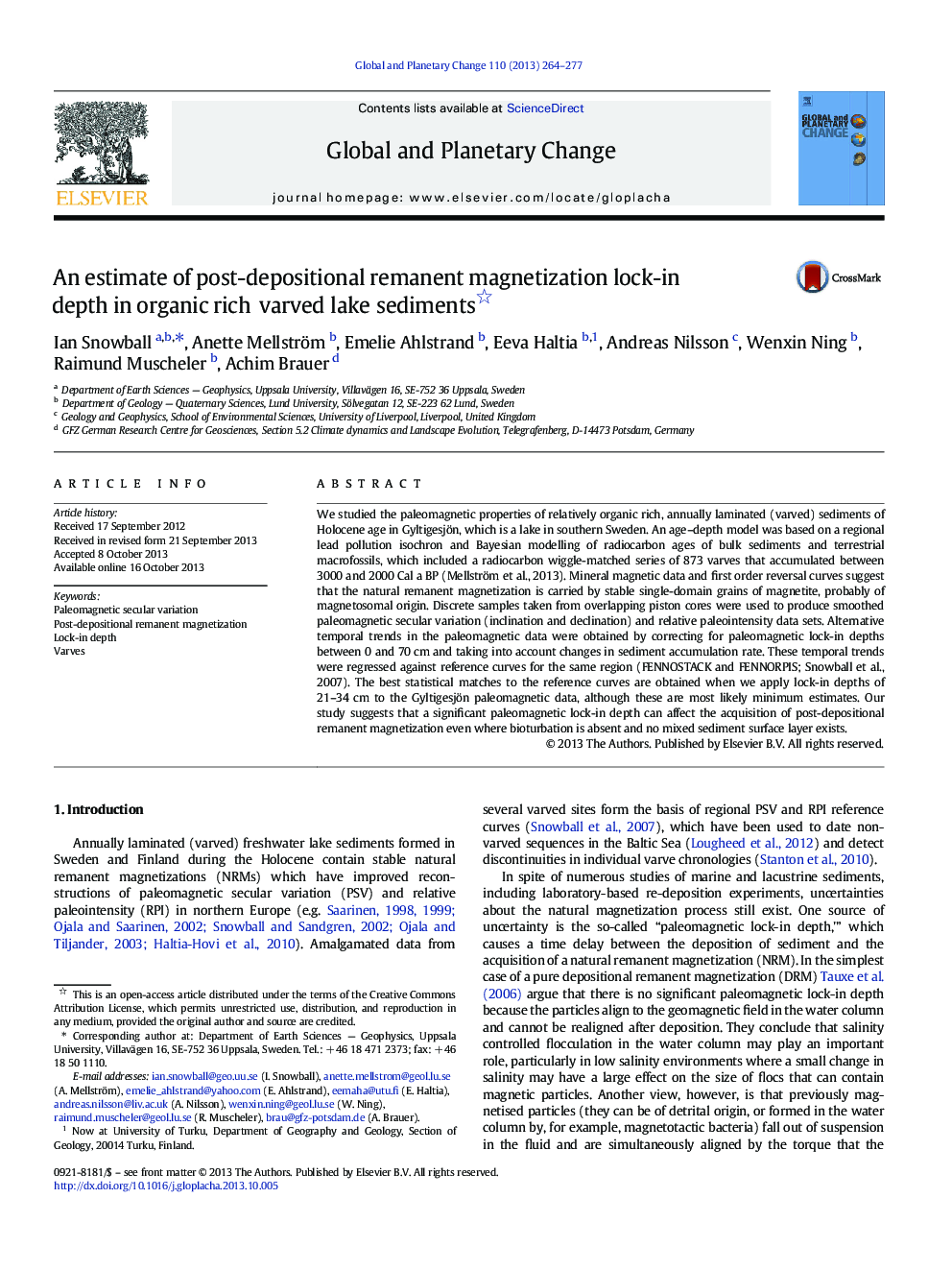| Article ID | Journal | Published Year | Pages | File Type |
|---|---|---|---|---|
| 6348319 | Global and Planetary Change | 2013 | 14 Pages |
Abstract
We studied the paleomagnetic properties of relatively organic rich, annually laminated (varved) sediments of Holocene age in Gyltigesjön, which is a lake in southern Sweden. An age-depth model was based on a regional lead pollution isochron and Bayesian modelling of radiocarbon ages of bulk sediments and terrestrial macrofossils, which included a radiocarbon wiggle-matched series of 873 varves that accumulated between 3000 and 2000 Cal a BP (Mellström et al., 2013). Mineral magnetic data and first order reversal curves suggest that the natural remanent magnetization is carried by stable single-domain grains of magnetite, probably of magnetosomal origin. Discrete samples taken from overlapping piston cores were used to produce smoothed paleomagnetic secular variation (inclination and declination) and relative paleointensity data sets. Alternative temporal trends in the paleomagnetic data were obtained by correcting for paleomagnetic lock-in depths between 0 and 70Â cm and taking into account changes in sediment accumulation rate. These temporal trends were regressed against reference curves for the same region (FENNOSTACK and FENNORPIS; Snowball et al., 2007). The best statistical matches to the reference curves are obtained when we apply lock-in depths of 21-34Â cm to the Gyltigesjön paleomagnetic data, although these are most likely minimum estimates. Our study suggests that a significant paleomagnetic lock-in depth can affect the acquisition of post-depositional remanent magnetization even where bioturbation is absent and no mixed sediment surface layer exists.
Related Topics
Physical Sciences and Engineering
Earth and Planetary Sciences
Earth-Surface Processes
Authors
Ian Snowball, Anette Mellström, Emelie Ahlstrand, Eeva Haltia, Andreas Nilsson, Wenxin Ning, Raimund Muscheler, Achim Brauer,
